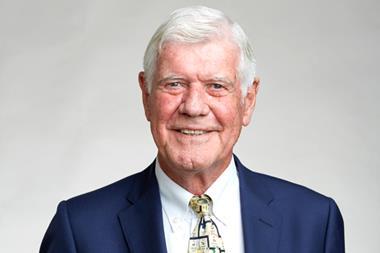You tell us what you think about emissions and industry-academic partnerships, and add some historical context
Industrial disputes
The otherwise excellent article on ‘How to get research funding from industry’ (Chemistry World, November 2019, p59) fails to take into account two key factors. The first is the unrealistic expectations of the academic institution, with its business development managers trying to get a disproportionate amount of money from the company in order to justify their existence. The second is the company business managers, who, having reluctantly funded what was sold as a comprehensive internal research programme, can’t understand why they are now being tapped up for money for academia, which they regard as leaking like a sieve anyway. Oh happy days!
Mike Green FRSC
Newcastle, UK
Lung time coming
In the feature on single-atom catalysts by Andy Extance in November’s issue (Chemistry World, November 2019, p52), a member of the US Lawrence Livermore National Laboratory (LLNL) is quoted as stating that ‘we’ve redesigned the fuel cell, thinking about how the lungs operate’.
I did this in the 1970s.1 In that project I proposed and used ‘electrodes analogous to biological lung membranes for fuel cell research’.
At the oxygen electrode I used silicone rubber (as used medically, for example, in blood oxygenators) rendered electrically conductive with carbon and variously catalysed (iron phthalocyanine, silver or various others) on the electrode face in contact with an aqueous electrolyte. A zinc electrode acted as the ‘fuel’. As a first attempt, these laboratory set-ups gave a low but respectable performance, and with the present availability of certain polymers having much greater oxygen permeability, such a system should be capable of significant improvement.
Michael Parrish FRSC
Morpeth, UK
Reference
1 M A Parrish, Mater. Eng. 1981, 2, 208
Synthesise this
Chemjobber mentions the Balz–Schiemann reaction as a method for synthesis of an aryl fluoride from an aryl amine via a diazonium salt (Chemistry World, August 2019, p45).
I was involved in work that found that heating a stable diazonium salt (with a non-nucleophilic anion such as BF₄-) under dry conditions using sand as a diluent produces an aryl cation that abstracts a fluorine atom from the counterion. Using sulfolane (tetramethylene sulfone) as a solvent did not improve yields but led to the formation of a sulfoxonium salt by reaction of the aryl cation with the solvent.
This process can be used to synthesise sulfoxonium salts from a wide range of sulfones, sulfates and sulfonate esters (also using PF₆- as the counterion), which react readily with primary amines to form N–alkyl sulfoximines.
David Snodin FRSC
Bristol, UK
References
G R Chalkley et al, J. Chem. Soc. C, 1970, 682 (DOI: 10.1039/J39700000682)
G R Chalkley et al, J. Chem. Soc. Perkin Trans. 1, 1978, 1580 (DOI: 10.1039/P19780001580)
Post Verneuil
Andrea Sella described the Verneuil process in his April 2019 Classic kit article (Chemistry World, April 2019, p70). This process was operated commercially by the National Lead Company (later renamed NL Industries) in New Jersey in the 1960s.
They operated in a small building adjacent to National Lead’s head office in South Amboy. They made strontium titanate by a version of the Verneuil process invented by Leon Merker and Langtry Lynd. Strontium titanate has the sparkle of diamond but is too soft for daily use. NL hypothesised that the real value of strontium titanate lay in jewellery, so they collaborated with an established jewellery business to exploit this. The business was Madame Wellington, which sold by mail order and in several retail stores in the US and Canada. It is currently owned by QVC. Many of their products contain synthetic gemstones that are made from cubic zirconia, but these are not made by the Verneuil process.
The NL gemstone business was managed by Howard Dess, who died in June 2010.
Alan E Comyns FRSC CChem
Chester, UK
Ultra high emissions
In April 2019, an ultra low emission zone was introduced in central London, UK, in an attempt to ‘improve the health of Londoners by cleaning up the City’s toxic air’. This anti-pollution initiative is like an attempt to plough a 1000-acre plot of land with one person and a spade! At some point, anti-pollution and climate change initiatives must be supported by intelligence and integrity. There is nothing intelligent nor particularly moral about blaming road traffic alone for London’s bad air since the city has five major airports and is pushing to expand at least two of those.
Planes emit CO2 directly into the earth’s upper atmosphere. Driving a relatively fuel-efficient car (25–30 miles per gallon) has a lower carbon footprint than flying. A trip from Philadelphia to Boston, about 300 miles, would generate about 104kg of carbon dioxide per medium-sized car (regardless of the number of passengers); flying the same journey on a commercial jet would produce some 184kg of CO2 per passenger. Britain’s emissions from aviation more than doubled from 1990 to 2000.
Londoners sit in a milieu of airports and bear the brunt of planes emitting carbon dioxide, hydrocarbons, carbon monoxide, sulfur, nitrogen oxides, water vapour and soot. Plane emissions fall to the earth under the influence of gravity. One transatlantic flight can add as much to your carbon footprint as a typical year’s worth of driving.
Some of London’s health problems could be the consequence of the dome of airplane pollution generated around the capital. A joined-up picture of dealing with climate change and the health of Londoners will require the discipline and honesty of not trying to ‘remove the mote in your brother’s eye’ (car drivers) while ‘ignoring the beam in your own eye’ (plane passengers).
Angeline Kanagasooriam CChem MRSC
Dover, UK
Correction
The image on p58 of the November issue should be credited to Max Oppenheim.












No comments yet